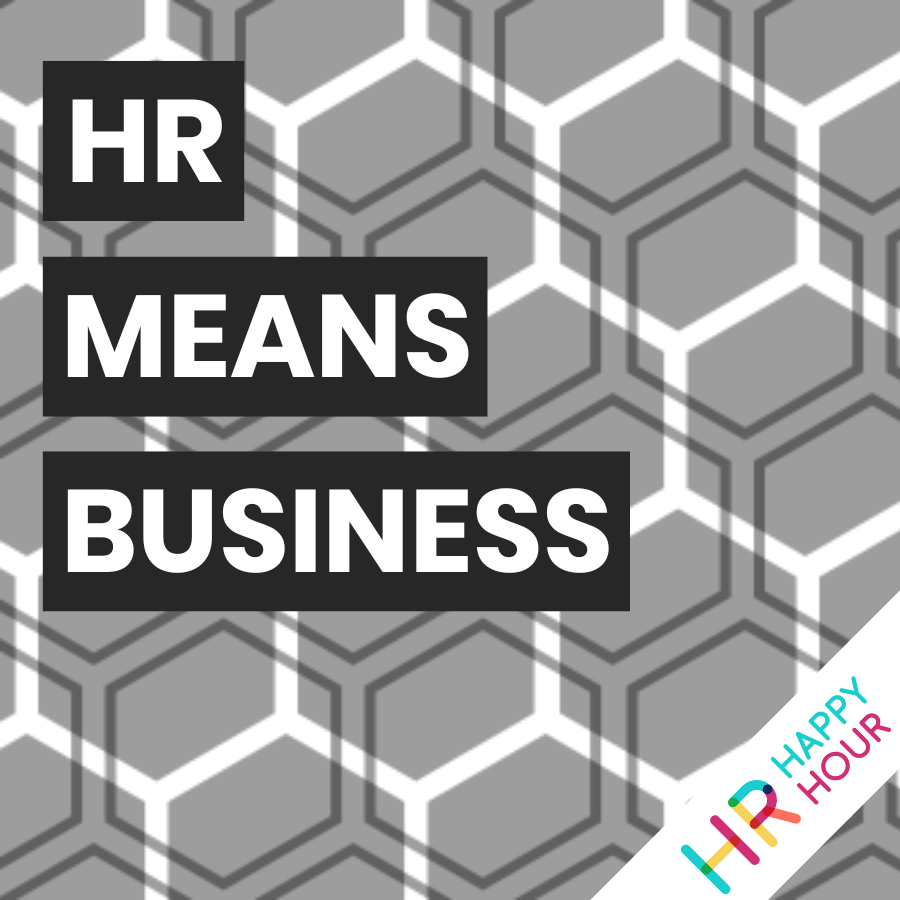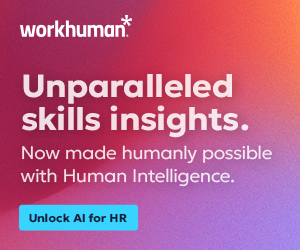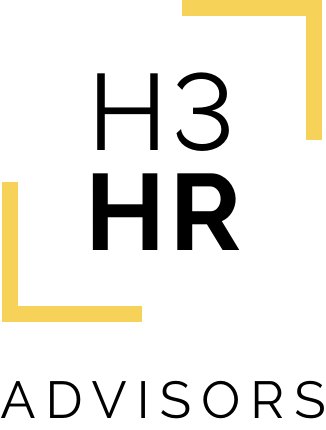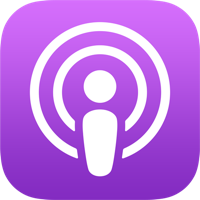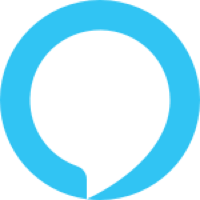Will AI Help to Reduce Employee Burnout, or to Increase it?
Hosted by

Mervyn Dinnen
Analyst, Author, Commentator & Influencer
About this episode
Will AI Help to Reduce Employee Burnout, or to Increase it?
Host: Mervyn Dinnen
Guest: Gabriela Burlacu, Senior Manager at Upwork Research Institute
In this podcast interview Mervyn talks with Gabby Burlacu about Upwork’s latest research into the impact that AI tools may have on productivity and employee burnout.
During the conversation they discuss :
- How AI is being deployed in organisations, and if it is leading to an increased workload
- The productivity paradox – currently there is a gap between expected productivity gains and the reality
- Might AI follow the path of other technological advancements that have led to increased workload and not improved productivity?
- Is there a risk of AI negatively impacting employee engagement and satisfaction by taking away tasks that people enjoy?
- What is the impact for Skill Development and Learning – will AI take over tasks that used to provide useful learning opportunities?
- What AI means for the freelance, temporary and consulting market
Thanks for listening! Remember to subscribe to all of the HR Happy Hour Media Network shows on your favorite podcast app!
Transcript follows:
Mervyn Dinnen 0:18
Welcome to the HR Means Business podcast, which is part of the HR Happy Hour Network I am your host Mervyn Dinnen. A recent research report published by the Upwork Research Institute found that 71% of full time employees are feeling burned out, and 65% reported struggling with their employers demands on their productivity. At the same time, 81% of global C suite leaders acknowledge that they’ve increased their demands on their workforce over the past year or so, and most leaders have got high hopes that generative AI will help boost productivity. Fact, 96% of the C suite leaders surveyed said they expect the use of these tools to increase company productivity overall. So far, AI is not delivering on this yet, and nearly half of employees said they’re not sure how to achieve productivity gains. Now, the research by the Upwork Research Institute had some fascinating findings, and I’m going to be discussing some of the key points today with Gabby Burlacu, who is a senior manager at the Upwork Research Institute. Gabby, welcome to the HR means business podcast. Would you like to introduce yourself?
Gabby Burlacu 1:25
Mervin, thank you so much for having me. My name is Gabby Burlacu, and as you mentioned, I’m a senior research manager at the Upwork Research Institute. I am a long time workforce researcher, and I was one of the lead researchers on this particular research report.
Mervyn Dinnen 1:40
I’m speaking to the right person, then, yes, AI is seen as a tool to improve productivity. I mean, it obviously does a lot more, but in terms of the workplace, people see it as a something that can improve productivity and lessen the risk of employee burnout. But that’s not necessarily what we’re seeing at the moment. Is it the way it’s being deployed in organizations? Do you think and that is actually increasing workload and pressure?
Gabby Burlacu 2:10
You know, I really do think so. And it’s so interesting when we took a step back and we wanted to do this research, the reason that we wanted to do it is because there were so many conflicting messages out there in the market about what it feels like to be an employee today. So on the one hand, you see a lot around AI is here, and it’s amazing, and it’s going to help you, and everything’s going to be different. And on the other hand, you see a lot around AI is going to take your job, and everyone’s burned out and everyone’s getting laid off. And so one of the things we really wanted to do was level set and say today, what is the experience of being an employee, actually? And do business leaders see that experience and understand that experience for what it is? So we surveyed 2500 C level leaders, full time employees and freelancers across a variety of industries, and we did indeed find that the burnout is very real, that business leaders do see that their workers are burned out. In fact, 81% of C suite leaders said, You know what, we have increased demands on people in the last year. But the real difference was in how AI was viewed, because 96% of our leaders said AI is going to increase workforce productivity. Conversely, 77% of employees said it’s actually adding to my workload. And so here’s the thing, all of the sudden, on top of these growing demands that employees are experiencing, they are being asked to learn these new tools, they’re being asked to oversee the output of AI tools, and they’re being asked to take on more work when it’s assumed that they’ve got more time freed up on their plates. And all of this together has led to most people saying it’s actually adding to my workload and adding to my day, instead of helping me be more efficient. And so I think there’s definitely something there around the way that we are placing AI as an additional demand on top of the demands that we’re already increasing on people.
Mervyn Dinnen 4:07
I suppose it’s what we call the productivity paradox. So currently, there’s obviously a gap between expected productivity gains and improvements and and the reality in previous technological advancements haven’t necessarily led to expected productivity gains either. Is there a danger? Do you think ao may follow this pattern?
Gabby Burlacu 4:31
Yes, and I love this question, because I think the productivity paradox sounds very fancy and complex, but we actually feel it every single day. And I think one of my favorite places that this conversation comes up recently is in the four day work week. What are your thoughts on the four day work week? Just curious. Mervyn, are you a believer?
Mervyn Dinnen 4:54
Yes, yes and no? It’s interesting. So I started the. I started in the world of work a long time ago, and people came into jobs then, and some already, kind of had arranged that they were going to work a four day week. They had other pressures. They had other things outside. Usually, they had families, and it tended to be Monday to Thursday or Tuesday to Friday. So it wasn’t abnormal in office based work, should we say, to see people having a three or four day week because that, because that was the basis on which they were hired. I think that in recent years, my personal view is we’ve got very hooked on to this kind of five day working week, and anything less means you’re a slacker or something, or you’re not working hard enough, or or you’re you’re somehow missing out on something important that you should have done. And so I think that it’s, it’s, I mean, it’s not really the number of days, number of hours. It’s, you know, we like to say it’s what you achieve in those and, you know, there’s been plenty of examples of people we’ve all worked with. They’ve probably worked seven eight hour days and achieved about as much as somebody put in three or four hours. But yeah, I think that there is a danger that we could expect greater productivity gains, and that’s possibly because we think that AI can do things that don’t need the human element. But sure, well, it does need the human element.
Gabby Burlacu 6:24
Absolutely. And I think, you know, part of the question becomes, okay, if we have so many digital tools now, where work that used to take months can be done instantly, do we need to be working the same amount of time? And if we are working the same amount of time, or in some cases, even more hours, than before. Shouldn’t we see massive increases in our output, in our productivity, and I think of my own work as a researcher, and some of these, you know, tools that help me do work rather quickly. How would I reach research participants without internet based tools? How would I analyze data quickly, without the software and tools that help me do that. But am I working the same amount of hours as the researchers of the past? And I think in a lot of cases, the answer is yes, or sometimes even more hours. So that’s just my experience. But at an economic level, we have seen time and time again that as technology innovation has you know, exploded. We see tools that we couldn’t even have conceived of 20 or 30 years ago, and we’re working the same amount of hours. You actually don’t see that expected boost in productivity economically and that expected boost in work output that you would expect. And I think it really comes down to all of the things that haven’t also accompanied tech innovation. So tech innovation is a runaway train, but what we haven’t also done is innovated in how we work, in our workflows, how we structure organizations, how we organize work, and who does the work, and as a result, you just don’t see the technology having that productivity increase that you would expect. I think we absolutely stand to create another productivity paradox with AI. And the more that we kind of layer AI on top of people’s existing work and on top of old work models, we’re going to keep kind of failing to unlock its full productivity, and we’re going to keep burning people out, because we’re not really adjusting anything about their work, but we’re adding something more to their plates.
Mervyn Dinnen 8:22
That’s right, that’s right. And I think job satisfaction comes into it too, because one of the things that I suppose I’ve noticed, and you know, crops up in conversations I have with people, is that some of the tasks that can be automated very easily by AI are actually tasks that employees enjoy and find satisfying. And, in fact, I did some research on this. In fact, wrote, wrote a piece about it a couple of months ago that some of the the the, I won’t use the low hanging fruit word, but term, but some of the things that that we can say, well, AI can do that. You know, AI can create that piece or something like that, but those are the bits people enjoy at work. And it might be a very small thing, it might be a large thing, but to to the individual, there’s a sense of achievement when they’ve done that. And if we use AI to take away these tasks, are we going to can’t somehow decrease engagement and strip away some of the enjoyable aspects of work, which, in turn, really can overall, can can impact overall productivity, job satisfaction and ultimately, retention, I suppose.
Gabby Burlacu 9:34
Yeah, well, there is, I think, a perception out there that rote, repeatable tasks are the ones employees hate, and I’m not so sure about that. But also, what’s really, I think, remarkable and different about generative AI tools in particular, is that it’s actually not just an automation tool, but also what we call an augmentation tool. So in some cases, you’re actually partnering with the tool to do things in different ways. And here’s where I think it becomes very interesting in terms of job satisfaction, because one of the things that researchers are increasingly finding is that these tools tend to help boost the performance of lower performing employees. So all of a sudden, lower performing employees can kind of mimic the performance and productivity levels of high performers, less creative employees can kind of mimic the creativity of more creative employees. And when you’ve got employees that are already really high performing, highly skilled, these tools just don’t help as much. So as an organizational psychologist, a lot of my work has been focused on high performing employees, and how can organizations find them, keep them, engage and reward them. And this is obviously a really important group of employees to organizations. So when you are adding tools that really boost the performance of lower performing employees and kind of close that gap, you’re kind of diminishing, in some ways, a little bit of the star power of a high performing employee. And you have to wonder kind of what that does to their job satisfaction and their engagement. Now, I will say that I think the answer really lies in rethinking our performance management processes. It’s very likely that what a star employee was, you know, in the 90s, 2000s is not going to be the same as what a star employee is and looks like in an AI enabled world, but I think in the meantime, we are going to see some growing pains when we are deploying these tools without careful consideration to who is it that they’re trying to help and what impact is this having on people who maybe Don’t need that boost to their performance. That’s a very how they feel about their work.
Mervyn Dinnen 11:44
Yeah, that’s a very interesting point, Gabby, one that I hadn’t considered. But yes, I mean, you are, I suppose we’ve all worked in organizations where you can sense, I suppose, the high performers and the, I won’t say low performers, but, but not as high performers. And so possibly is something that that either kind of, I suppose, smooth that gap out, or, as you say, it’s, it’s, it’s interesting how we distribute work as well. Then that predominantly, I suppose, historically, management would have to a high performer, high achiever, would have given the more interesting work, but it might not be that way. Another area that also, I think might get impacted is kind of learning and skills development. Obviously, we live in a skills based age with skills based hiring, skills based assessments. I had a conversation with a Gen Z influencer not that long ago, was talking about the skills, or about the skills they develop automating some of these critical tasks we’re talking about, is that going to do you think, in some way hinder skill development? You know, some of the ones, some of the stuff we can automate, used to be essential, particularly for less experienced colleagues, to help gain knowledge and learning and greater understanding of their roles.
Gabby Burlacu 13:05
Oh, certainly. And I will say some of my research has focused on interviewing leaders at the C level, and especially within HR and learning and development. This is a huge concern among leaders, because they’re kind of seeing the tea leaves and what’s going to happen here, these AI tools, at least as of today, happen to be very, very good at things that really resemble the types of tasks that we give early career talent. So this is things like tracking down information, writing a first draft, categorizing information, taking notes in an important meeting, even some elementary coding, all of the sudden, this tool is able to do really, really well. And so one of the things that I hear a lot, especially when it comes to knowledge work, is that a lot of the work is going to shift from executing the work to overseeing the output of AI tools. So if you have executed the work in the past, you are familiar enough with it to know whether the output of the AI tool is accurate, whether it’s biased, whether it’s incorrect, and truly, inaccuracy of output is a huge deal right now, like these tools are just not perfect yet, but it takes a skilled employee to know that. So if you’ve been able to sort of skip the steps of doing those entry level things that teach us all sorts of valuable things, it’s not just how to take notes, but it also teaches us how to communicate effectively, how to prioritize information. If we’re skipping all of that and going straight to overseeing the output of AI tools, I think we’ve we’re really potentially looking at a big problem when it comes to skills. Now I will say that we do have some historical precedent for where I think the solution lies here, because already there are things, even down to our educational systems that we don’t learn anymore because they don’t make sense given the tools we have available to us.
Gabby Burlacu 14:59
So, I’ll use statistical analysis again as an example. In the past, I think our education systems maybe taught us to do equations by hand. By the time I was in graduate school, it was really focused more around the kinds of tools you can use and how to interpret their outputs. And so I think we’re going to see a shift toward that same kind of learning and development here, both in organizations, but even down to our educational institutions. One of the things that our research is showing is that in an acknowledgement that shifting learning and development within organizations, and you know, even societally, can be very slow, there is a bit of a shortcut that organizations are taking now to ensure they have the AI skills that they need in their workforce, and that’s bringing in freelancer and non traditional talent that comes ready with AI skills. So one of the things we see is that freelancers tend to be a lot more self taught when it comes to AI they tend to be more likely to have pursued formal AI training, and we found that about half of them already come ready with the skills to kind of bring into the organization to help supplement some of the skill gaps that may exist. So while I believe that the long term answer is a shift in learning and development, I think in the short term, there is kind of a stop gap that we see organizations using in bringing in talent that already has the AI skills.
Mervyn Dinnen 16:20
That’s interesting. I suppose one of the points, something I’ve been writing and speaking about with my order, my co author, is this concept of total talent thinking, and it’s that, you know, it’s across the spectrum. It’s not just permanent employees. It’s, it’s, you know, not all skills will be supplied by humans, and it’s bringing in people with a whole range of relationships with the business, shall we say. And that’s obviously something you’re seeing as well, that enables business to maybe use different talent pools to maybe to do work that could be done internally. But maybe it’s a better way of spreading the work you think, managing it absolutely.
Gabby Burlacu 16:59
And I think you have touched on something so important here, which is that skills becomes that language of how you would do this and how you would make decisions around this. And without being really clear on what skills your organization has and what skills it needs, it’s going to be really difficult to say this is what we expect our full time employees to accomplish. This is where we expect AI can play a role, and this is where we expect sort of more non traditional pools of talent can come in. I think the organizations that get a really, really clear view of skills are going to be sort of first to be able to get that equation right and put the puzzle pieces together.
Mervyn Dinnen 17:40
I suppose, you know, AI has obviously got great potential, and we know that. And you know, we’ve touched on already about how it you know that that potential is probably nowhere near being fully realized yet, because it’s still early days. And yeah, a lot of people are experimenting with it to do very straight, straightforward things, as opposed to maybe the more complex analytical things. But I suppose businesses need to design, I suppose how, when and by whom it’s used, and that involves possibly a bit of rethinking around learning and development, kind of better understanding about the challenges and complexities that it might bring to the business. And how people can seamlessly integrate into it. What are you, I mean, from the research, are you finding organizations doing this, or is this still, you know, the the potential versus the, the actuality and realism is that, is there still a gap there?
Gabby Burlacu 18:39
You know, I would say for many it’s still a work in progress, because it really does come down to understanding how we can organize work differently, which is no small task. There was a finding in our research that wasn’t strictly related to AI, but it does have me thinking about its applicability here. And so one of the things that we saw when it comes to a burned out workforce is that sometimes what exacerbates that is the way that the organization evaluates their performance and what they’re held accountable for. And so we found, of course, that when workers are held accountable for hours worked or efficiency metrics, they tend to be a little bit more overwhelmed, right? How are they going to achieve that efficiency that their organization expects? And what we found conversely was that when employees are invited into the discussion and helped to co create the productivity metrics so they have a voice in how they’re evaluated and the metrics that they’re held against, the metrics themselves changed so those employees tended to be evaluated against things like their innovation and creativity, their contributions to company strategy, just these kind of broader metrics that move beyond how many hours did they work and specifically what was their work output. And so I think to myself, 47 per. Percent of workers say they have no idea how to achieve the productivity gains that their employers expect with a with AI. I mean, that’s huge. It’s not that they’re unsure. They have no idea. And so I think there’s a ton of opportunity, first of all, to clarify that path forward, but also to maybe co create and build that path with the people who are going to walk it because they know their job the best. And so I think any discussion of how we reorganize work for an AI future really should include the people who are doing the work. And I think that we’ll find that we land somewhere very different when we’re articulating what the value of these tools is going to be, when we’re deciding what metrics we’re going to use to determine whether we’re being successful with AI or not, I think including the people using the tools is going to land us somewhere very, very different, and that may be a piece that a lot of organizations are missing right now.
Mervyn Dinnen 20:50
I’m guessing that, yeah, organizational leaders and managers have very high expectations of what AI can do. Do. Are you seeing, particularly from this research, in your day to day work, possibly, you know, an over expectation, because a lot of these things is, I suppose, you know, in the short term, people expect too much. In the long term, they actually haven’t expected enough. And do you think AI will be a bit like that?
Gabby Burlacu 21:17
That’s exactly right. And I will say there is some pretty unbounded optimism at the C suite level, but I will also say, pertinent to this co creation discussion, it’s possible they’re focused on the wrong thing. So this focus on productivity, I think, is not the complete picture of what we can get with these AI tools, that they can be a learning tool, that they can be a tool for accomplishing work in different ways. Sometimes that’s not always going to look like productivity, but it is going to be a huge value add for organization. So I think, you know, number one, we maybe are being a little too optimistic about the productivity outcomes, but we’re also being narrow in not recognizing the other outcomes that these tools can drive.
Mervyn Dinnen 22:00
On the research project you did, was there anything that really surprised you?
Gabby Burlacu 22:05
Well, I will tell you that stat that I referenced earlier, that 47% of employees have no idea how to achieve their employers productivity gains or what they hope to achieve with AI tools. If you juxtapose that to the fact that 85% of organizations in our sample are already using AI tools. Some of them are mandating their use. Some of them are just encouraging people to use them without mandating them. You realize what a stark picture that is of today’s worker. So today’s worker already burned out. Demands on them are increasing. In many cases, there’s this tool that they are expected to use, and they are not being given any information for how to do that. It really paints, I think, a very frustrating picture. And I was, I was quite surprised at some of those numbers, frankly, because I do think that that really suggests that we’ve got an issue here.
Mervyn Dinnen 23:02
And how do you think that can be addressed?
Gabby Burlacu 23:06
I think, you know, the AI Station has, or the AI train, rather, has left the station. The idea that we will slow down and kind of stop and take a beat and rethink how we’re deploying these tools may not be realistic, but I do think that business leaders have got to carefully think through how it is that we’re guiding employees on using these tools at this point in time. And one thing that I think will help clarify this for employees, at least in the short term, while work is still the same, work model and Performance Management is still the same and learning development is still the same, is thinking through outcomes that you’re trying to drive and being really, really transparent about these are the outcomes that we hope to see with AI tools. This is how we intend to measure those things, and again, bringing employees into that discussion, because the outcomes may not be the right ones that business leaders are focused on.
Mervyn Dinnen 24:01
If anybody is listening to this and is thinking, We’re miles behind, we’re not even talking about half of this stuff, what would your advice be? How to get started, how to Yeah, what? What to address first, if you like, I suppose the the quick wins, the small wins, the small steps to take on this journey.
Gabby Burlacu 24:22
You know, I think there are many small steps you can take, none of which are the full solution. Right? As I mentioned, I really think that in order to get full value of these tools, we’re talking about fundamentally restructuring work. There are no small steps toward that. But in the interim, I think employee listening, understanding the perspectives and experiences of the people using these tools and determining together what kinds of outcomes you are trying to drive and being really, really clear about that will at least be part of the solution and helping people be more comfortable with. With and more accepting of this technology. I also think, you know, I know, I come from Upwork, where the world’s work market, where the world’s work marketplace, we really believe that the future of work is possibly more non traditional and less about the nine to five job role. But I do encourage business leaders to consider the way that non traditional talent can help kind of fill some of these AI gaps and even take some of the pressure off full time employees. That’s another thing we found in this research. So openness, I think, to non traditional models and ways of working is another, not quick win, but another win, as we think about, you know, moving forward on this journey.
Mervyn Dinnen 25:41
We’re almost at the end. How can people get get hold of a copy of the research? I’ll put a link in the notes. But what’s, what’s the research called?
Gabby Burlacu 25:50
Yes, it’s called our AI productivity research from burnout to balance. You’ll provide the link, and then we absolutely encourage people to visit our Research website, engage with the content, reach out to us with any questions, and we’re happy to keep the discussion going.
Mervyn Dinnen 26:06
Well, obviously, when I invite you back in a year’s time, you won’t be talking to me. You’ll be talking to the MERV bot and oh no, but it’s been, it’s been really interesting to hear some of the findings, and it is, I’ve been through the research, and there’s, there’s a lot of fascinating things in there, a lot of findings and and certainly a lot of food for thought in terms of the future, future structure of organizations, the future way we organize work. So I would recommend people to have a look at it if people want to contact you, Gabby, what’s, what’s the best way?
Gabby Burlacu 26:44
On our Research website do have a Contact Us button, and people are able to also engage with us on LinkedIn through the website.
Mervyn Dinnen 26:53
Okay? Gabby, it’s been a pleasure. Thank you for coming on the podcast.
Gabby Burlacu 26:58
Thank you so much.
Transcribed by https://otter.ai
Talk to us
If you want to know more about any aspect of HR Happy Hour Media Network, or if you want to find out more about a show topic, then get in touch.

